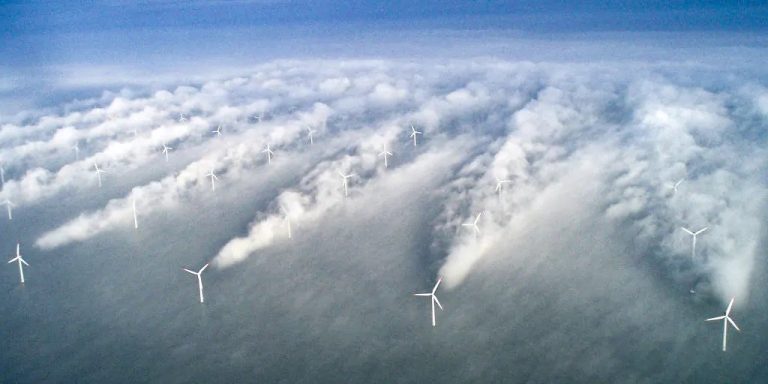from NoTricksZone
Author: P. Gosselin
climate news
(Translated by P. Gosselin)
In spring 2024, Professor Gerd Ganteför received a lot of criticism when he reported on the so-called wake effects of wind turbines on the high seas. up to 100 kilometers.
Meanwhile, wind farm operators are also aware of this. The company Orstedt is heavily involved in the so-called renewable energy sector, and its website has some interesting results. Simply put, it means the turbines in the network are producing less, which means each turbine is less profitable.
Overall, the amount of electricity produced increases with the number of wind farms, but so does the time it takes for each turbine to pay off its investment. If the calculated power generation of 4,000 – 4,500 hours per year is not achieved, production will decrease. As wind farms become more numerous, this impact is likely to increase. It's like a downward spiral. Let's see how Germany reacts to this. It would not be surprising if more feed-in tariffs were paid.
The size of German territory was not a decisive factor. “Theoretically, higher capacity than 70 GW could be built there,” said Martin Dörenkämper of Fraunhofer IWES Oldenburg.
It is true that if wind turbines are planned closer together than they are now, wake effects will increase. But even if each turbine produces less electricity, overall electricity production will still increase. The question is therefore not whether Germany has enough space for 70 GW, but how many terawatt hours of electricity can be produced each year and at what price.
The higher the power density, the lower the output per turbine, making it more difficult for operators to refinance construction and generate a return on investment.
Ganteför explains in the film that it is now possible to visualize the wake effect with the help of radar images from the Sentinel 2 satellite. In the spring, he was ridiculed for this theory.
He points out that wake effects can have a variety of effects. For one thing, turbines on land receive less wind and may experience warming behind the turbines. There is also the impact of precipitation. Ganteför calls for more research in this area.
Two years ago, Fraunhofer Herron already pointed out another problem. Another impact: Disturbing the stratification of water affects the production of plankton, the beginning of the food chain.
Another consequence of wake eddies is the reduction of shear-related processes on the sea surface. In other words, within tens of kilometers around the wind farm, the degree of mixing of water surface turbulence caused by wind is reduced.
Water is often layered, with a layer of warmer water above a layer of colder water.
Wind farms disrupt natural stratification. Due to reduced mixing, more stable stratification of water is facilitated. This is especially noticeable during summer when stratification is reduced. The natural stratification of water is especially noticeable in summer and gradually decreases in autumn. However, in the wind farm area, a more stable stratification is calculated beyond the seasonal fluctuations.
What do the results mean for the North Sea?
“The magnitude of the induced mean changes does not indicate serious local impacts, but profound structural changes are occurring in the system,” Christiansen said. “Changes in flow and mixing may affect plankton production and food web structure, and may Affecting the functioning of protected areas. It is therefore important to consider these consequences when developing marine protection concepts,” says Professor Corinna Schrum, Director of the Hereon Institute. Schrum looked ahead to the implementation of the results, adding that further research is needed to analyze possible feedback from air-sea exchanges. Changes in this exchange have potential implications for regional atmospheric conditions and ecosystem dynamics and will be the subject of further research.
This doesn't sound like established science at all.
Relevant
